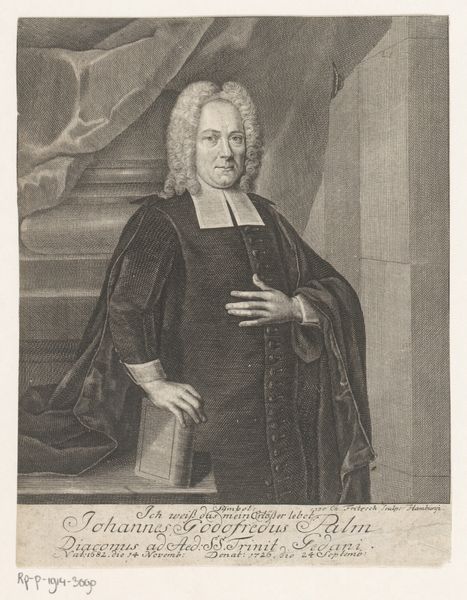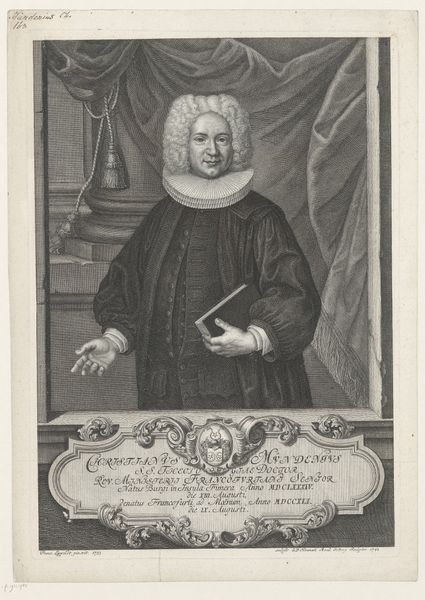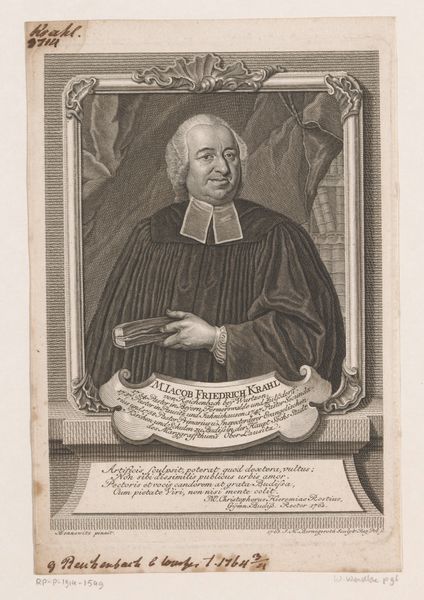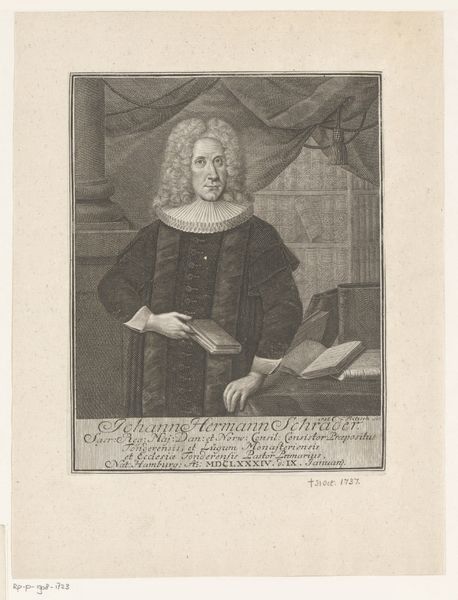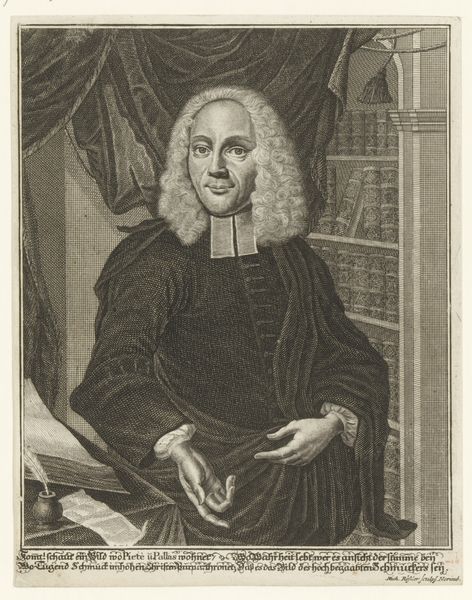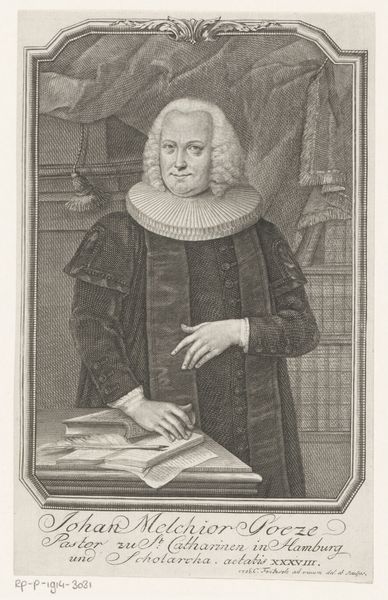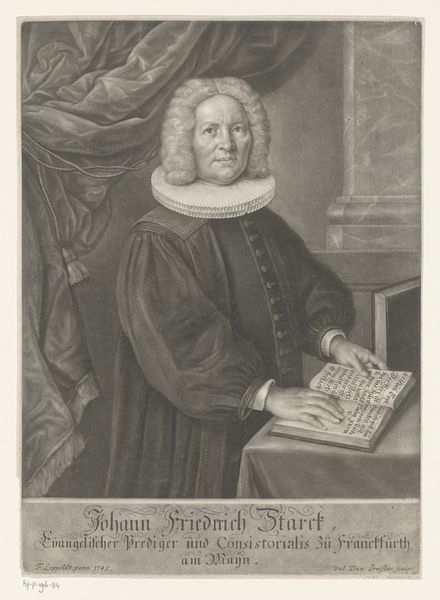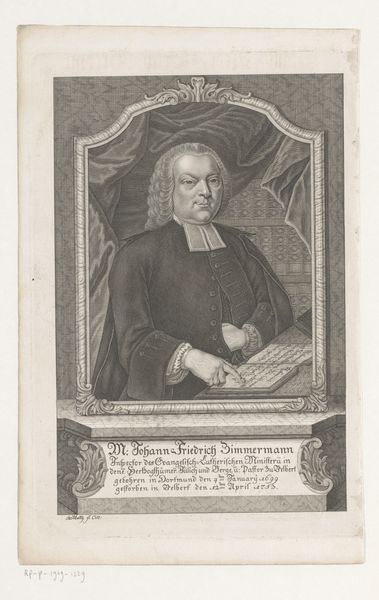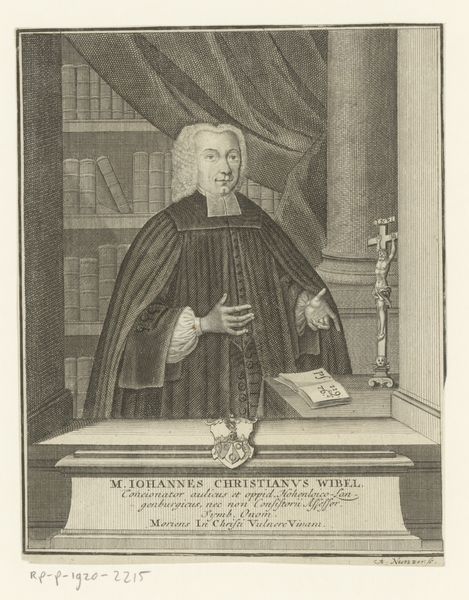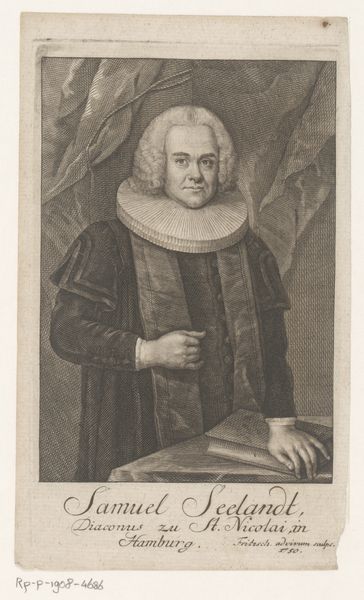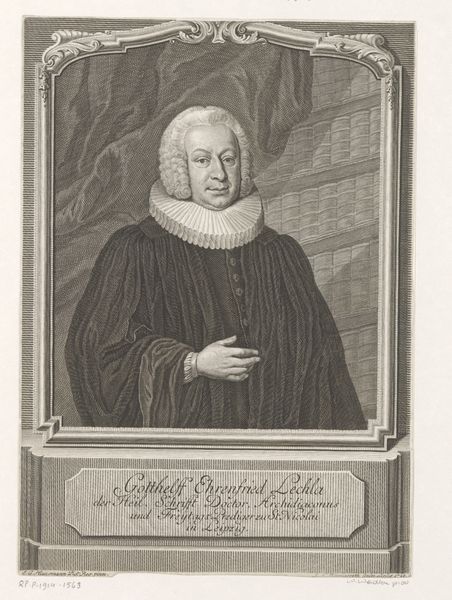
engraving
#
baroque
#
history-painting
#
engraving
Dimensions: height 191 mm, width 141 mm
Copyright: Rijks Museum: Open Domain
Curator: Before us is a print dating back to 1735, found in the Rijksmuseum, a piece known as "Portret van Johann Vogt op 40-jarige leeftijd" by Christian Fritzsch. Editor: The density of line work is quite astonishing! See how it establishes not just form but also, almost palpable, a quiet solemnity. It feels so very balanced, very contained, like Vogt himself. Curator: It does radiate that. It depicts Johann Vogt, a pastor in Bremen, likely commissioned to project an image of authority, scholarship, and spiritual gravitas. That open book he holds alludes to accessibility and wisdom. Editor: Note the visual weight. The drape of fabric and strong vertical lines around the columns counterbalanced by the table to his left - they offer structure against the more fluid forms of his wig and gesture. What do those opposing forms represent? Curator: One reading might interpret this opposition of architectural form and vestmental robes, combined with Vogt's poised bearing, as evidence of divine intellect intersecting with terrestrial oratory, mediating heaven and Earth, spirit and word. It's a potent symbol. Editor: Perhaps the soft and almost romantic treatment of his hair—quite intentionally artificial— serves as a key structural element. I wonder what the engraver Fritzsch wanted us to see or know. It softens his figure in counterpoint with all of the angular linear elements around him, his clothing, the buildings... Is it a nod to his humanity? Curator: Quite possibly. Beyond individual expression, however, Vogt, with his elaborate wig and clerical garb, functions as a symbol of established power and doctrine, standing within institutions with specific aims. His calm assurance seems almost intended to project stability within these social orders. Editor: It is all a matter of framing—literally. It strikes me now: The inscription. The Latin. The meticulous detailing. All build upon one another to reinforce, above all else, Vogt’s legitimacy. It’s more than just a portrait; it is the construction of one, painstakingly built from hatching marks to biblical quotation. Curator: I'd agree. These engravings functioned as tools for image cultivation, subtly yet powerfully reinforcing the established social framework. Editor: Fascinating! Looking at it this way offers me a new way to think about this quiet, thoughtful man—perhaps more now, not just as Vogt, but also as the figure in history they made him.
Comments
No comments
Be the first to comment and join the conversation on the ultimate creative platform.
